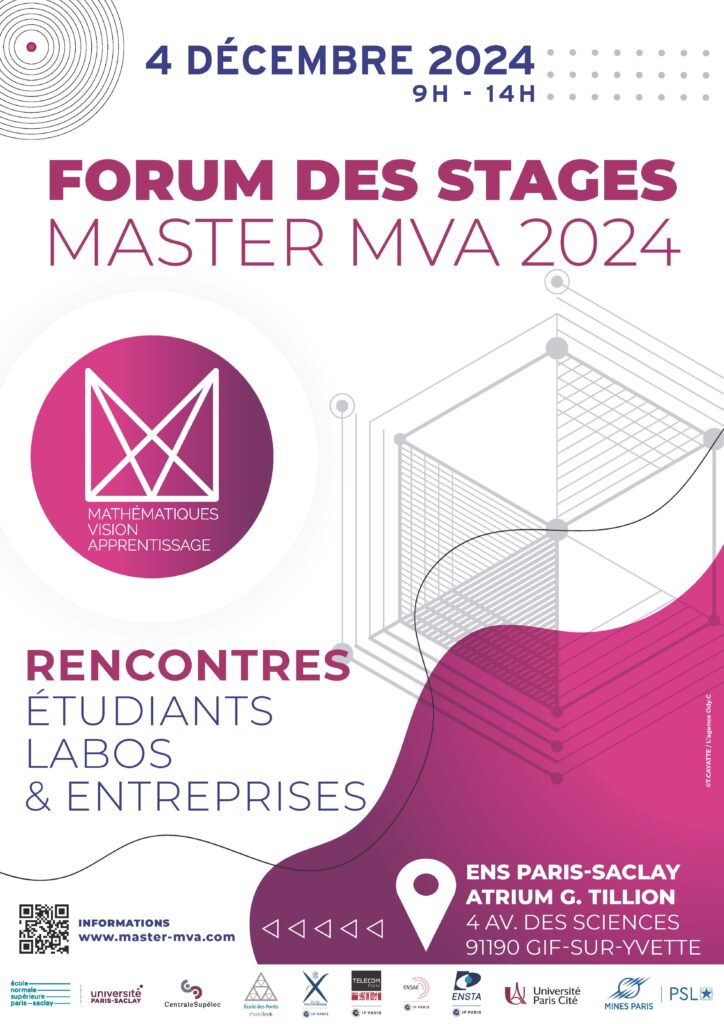Objectif du cours
Optimal Transport (OT) is a foundational mathematical theory that connects optimization, partial differential equations, and probability. It offers a powerful framework for comparing probability distributions and has recently become an important tool in machine learning, especially for designing and evaluating generative models. This course covers the fundamental mathematical aspects of OT, including the Monge and Kantorovich formulations, Brenier’s theorem, the dual and dynamic formulations, the Bures metric on Gaussian distributions, and gradient flows. It also introduces numerical methods such as linear programming, semi-discrete solvers, and entropic regularization. Applications in machine learning will include topics like training neural networks via gradient flows, token dynamics in transformers, and the structure of GANs and diffusion models. The course will focus primarily on mathematical content rather than deep learning techniques. However, it will include hands-on numerical programming sessions using PyTorch, along with exercise sessions. Assessment will be based on a written exam reflecting the material covered in both the numerical and exercise components.
Organisation des séances
8 courses of 3h + exam
Bibliography :
* Optimal transport for machine learners, course notes, Gabriel Peyré,
https://mathematical-tours.github.io/book-sources/optimal-transport/CourseOT.pdf
* Computational Optimal Transport, Gabriel Peyré, Marco Cuturi, https://arxiv.org/abs/1803.00567
* Optimal Transport for Applied Mathematicians, Filippo Santambrogio,
Gabriel PEYRE
(CNRS et Ecole Normale Supérieure)
Julie DELON
(CNRS et Université Paris Cité)
